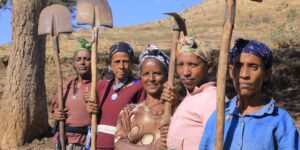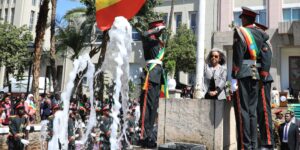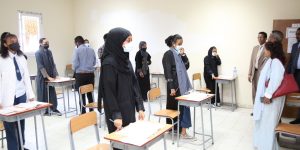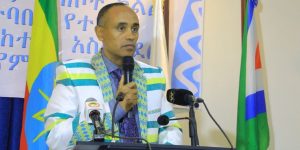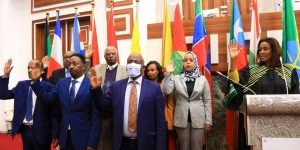While Ethiopia’s federal government seeks to replace Tigray’s regional administration by force, the region’s underlying border conflicts with Eritrea and Amhara are likely to re-erupt.
By
On 9 September 2020, Ethiopia’s regional state of Tigray held elections. They confirmed the rule of TPLF (Tigray People’s Liberation Front; aka Woyane), which has administered the state since 1991 and was the dominant force within the federal government until 2018. Tigray’s elections exacerbated a crisis that was looming since Ethiopian prime minister Abiy Ahmed’s ascension to power in 2018: The TPLF lost power in Addis Ababa, but fortified its hold on Tigray and increasingly disregarded decisions made by the federal government. In summer 2020, PM Abiy decided to postpone national and regional elections due to the Covid-19 crisis. Tigray disregarded this decision. The federal government reacted harshly: It cut all ties to Tigray’s government and declared it illegitimate – and started a military intervention to replace the Tigrayan government on 4 November.
This sudden escalation brings Tigray’s border conflicts back into focus. Tigray has territorial disputes with Eritrea and Amhara, its southern neighbour region within Ethiopia, but these conflicts have been frozen for many years. Both Eritrea and Amhara are now involved in Ethiopia’s military intervention in Tigray. Even though the border issues are not the reason for the current conflicts, Tigray’s neighbours might use the opportunity to settle old scores. This article briefly explains these border conflicts.
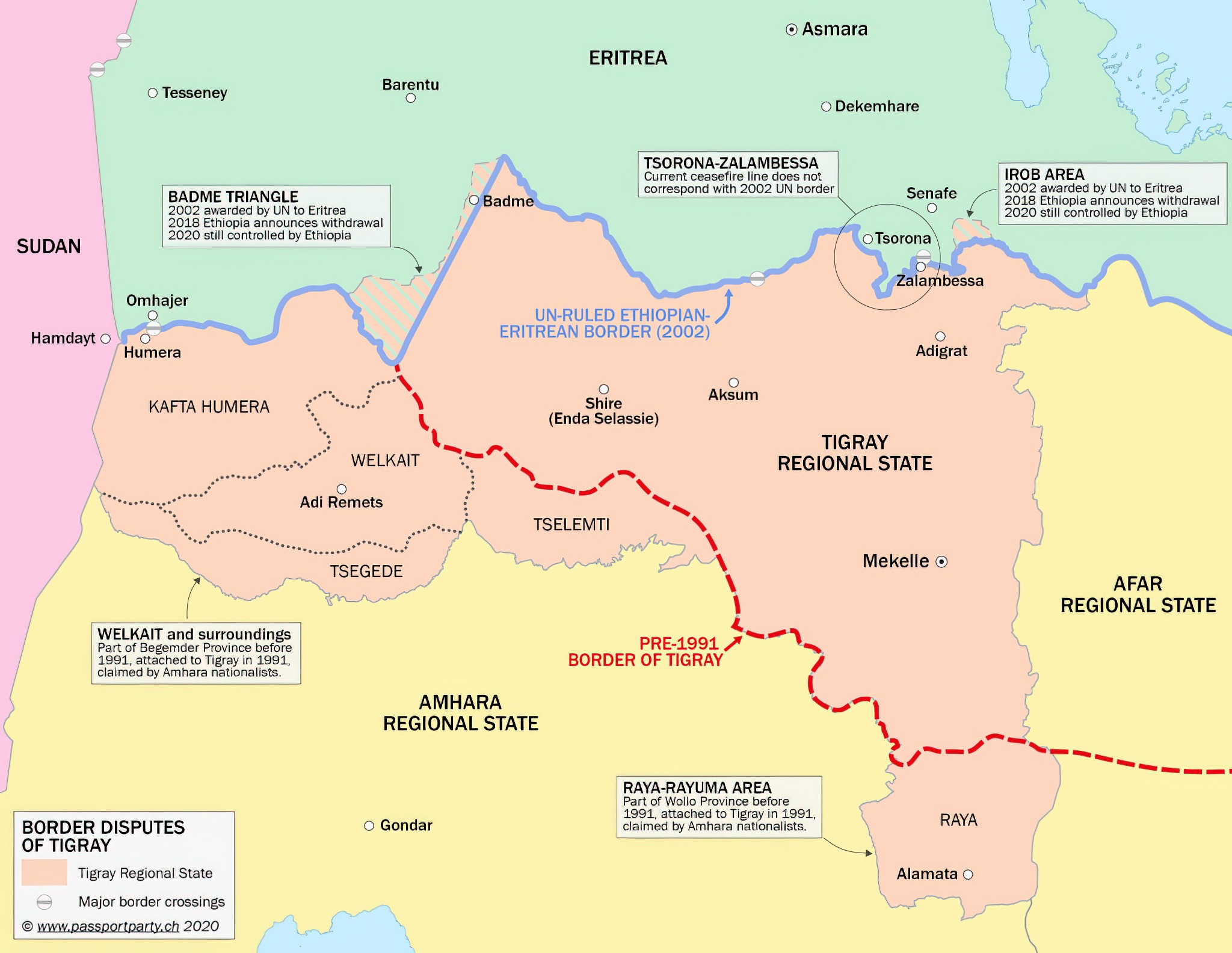
1. Raya
Raya-Rayuma has a complex and mixed identity. The territory lies at the border of nowadays‘ Tigray and Amhara regional states. Its population has traditionally been neither Amhara nor Tigray, but Oromo. In the last couple of decades, many Amharas and Tigrayans (Tegaru) have settled in Raya. As a result of this and their distance to other Oromo lands, most Raya-Oromos have assimilated linguistically to either Amharic, Tigrinya, or both – but preserved their distinct identity. Some Raya-Oromos in Tigray, however, now see themselves as a sub-group of the Tigrayan ethnicity.
Until 1991, Raya was divided into two districts (awrajas): Raya-Azebo in the North, and Raya-Kobo in the South. Raya-Azebo belonged to Tigray province, while Raya-Kobo was part of the multiethnic Wollo province, where Amharic language dominated. After the revolution of 1991, in which the TPLF and its allies took power in Addis Ababa, the two Raya awrajas were dissolved. While the territory of Raya-Azebo remained within the boundaries of Tigray, Raya-Kobo was divided between Tigray and the newly created Amhara regional state. This means: Tigray’s borders shifted southwards, at the expense of previously Amharic-governed territories. As a result, several Amharic-speaking towns and villages in Raya became part of Tigray. In Alamata woreda, for instance, Amharic is the mother tongue of about one third of the population.
Since 2018, tensions in Raya are growing. A committee called ማንነት አስመላሽ ኮሚቴ (Committee for the Reconstitution of Raya Identity) has been formed, questioning Tigray’s current borders. The Amharic-speaking population of Waja, Tigray’s southernmost town, has repeatedly blocked the main road connecting central Tigray with the rest of Ethiopia. Tigray’s security forces violently suppressed demonstrations. Already since ethical tensions rose in 2018, many Tigrayans avoided travelling by land to other parts of Ethiopia, fearing attacks on vehicles with Tigrayan car plates in Amhara and Oromia – as well as in the disputed Raya area.
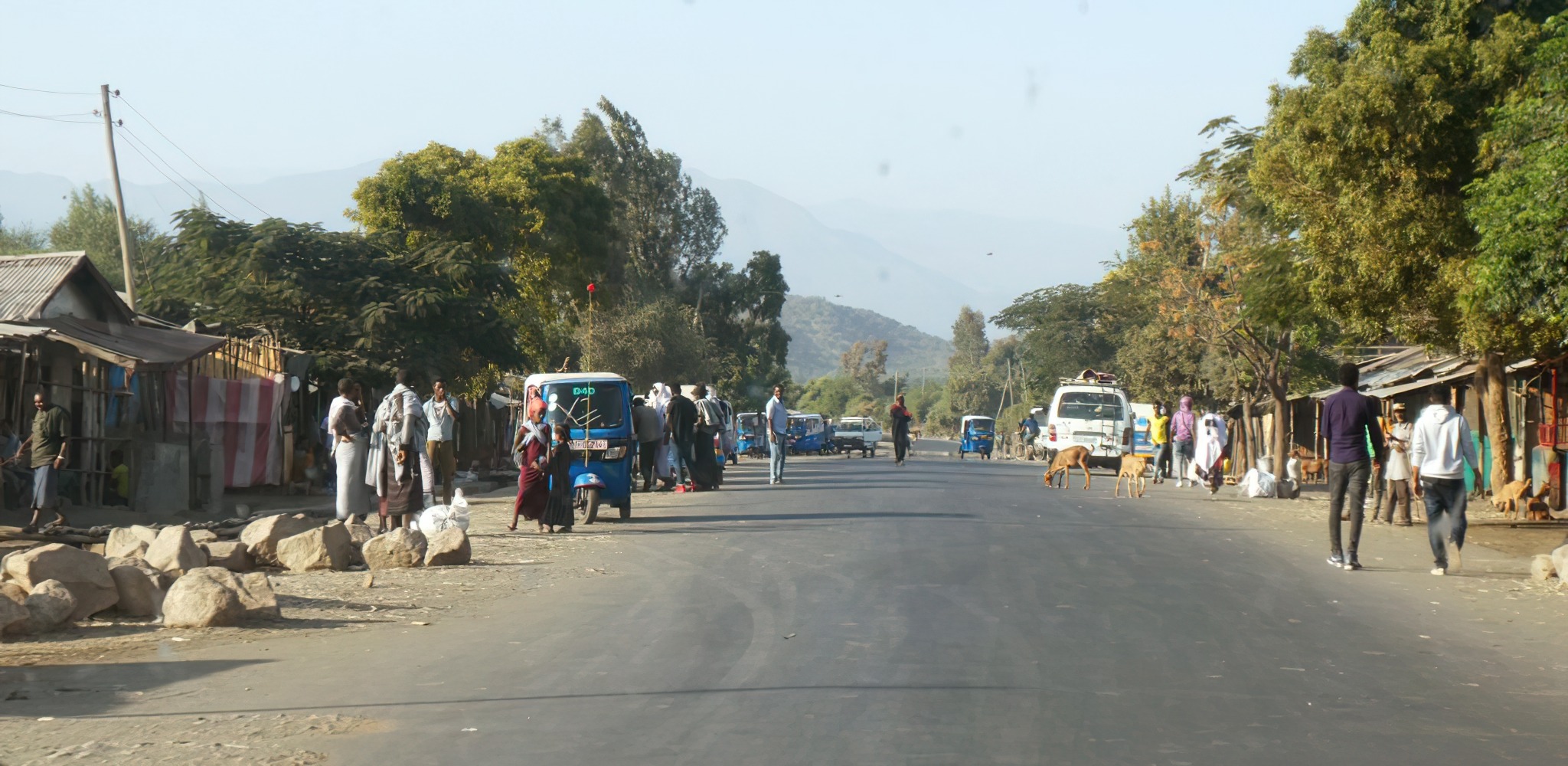
2. Wolkayit-Tegede
Similar to Raya, Wolkayit has a mixed identity. This also applies to the surrounding woredas of Tsegede (Tegede in Amharic), Tselemti (Telemt in Amharic) and Kafta-Humera – see the map above. The population traditionally has been closer to the Amharic-speaking area of Gonder than to Tigray, but both Amharic and Tigrinya languages are used in daily life. Prior to 1991, all four woredas were part of Amhara-dominated Gonder province. When the TPLF and its allies took power in Addis Ababa, the areas were attached to Tigray regional state. Since then, many Tigrayan settlers have arrived to the area, particularly to Humera town, changing the ethnic balance.
Since many years, local activist have demanded the attachment of the areas to Amhara regional state, created in 1991 out of Gonder and other provinces. Since 2018, tensions have mounted. A group called የወልቃይት ጠገዴ አማራ ማንነት አስመላሽ ኮሚቴ (Committee to Reconstitute the Amharic Identity of Wolkayit and Tegede) has formed. In the starting days of the 2020 Tigray conflict, Amhara security forces claim to have entered the area and occupied parts of Wolkayit-Tegede.
3. Badme
Badme is the central bone of contention between Eritrea and Ethiopia. The Ethio-Eritrean border is based on colonial-area contracts between Italy and the Abyssinian Empire – contracts made by bureaucrats in Rome, which did not take into account details of local geography. Since Eritrea became a part of Ethiopia after colonial rule, the ill-defined border did not become a problem for decades. But after Eritrea’s independence in 1993, the conflict swiftly boiled up. In 1998, fighting erupted around Badme between Eritrean and Ethiopian armies, with both accusing the other side of having started. The war soon spread to other contested border areas such as Tsorona, Zalambessa, Irob or Bure.
After two years, the war ended in a ceasefire. Badme was now under control of Ethiopia, as were several other disputed villages. Both sides agreed to entrust the UN with the task to settle the border issue and promised to accept the decision without conditions. In 2002, the UN boundary commission defined the border in a binding decision, awarding Badme to Eritrea. Eritrea proceeded to accept the decision, while Ethiopia demanded renegotiations. As a consequence, the two countries entered a cold war, which lasted until 2018. During this time, the border was firmly closed, with large military contingents stationed along the contested frontline.
In summer 2018, Ethiopia’s new prime minister Abiy finally announced that Ethiopia accepted the 2002 UN decision without conditions and the Ethiopian army would withdraw Badme and other contested areas awarded to Eritrea. Between September 2018 and early 2019, most land border crossings were opened for the first time in two decades. Since 2019, however, no further progress has been made on the border issue: Contrary to the announcement, Ethiopia has not withdrawn its forces from the disputed territories, and the border crossings are closed again. A crucial reason for this is the TPLF’s opposition any withdrawal of forces: The Ethiopian army’s Northern Command is rather loyal to the TPLF government of Tigray.
Badme is a small village with few natural/agricultural resources and little strategic value. But its symbolic value as the prize for the winner of the border war is high. In the last two decades, many Tigrayan settlers have arrived to the area. They firmly oppose PM Abiy’s withdrawal announcement. So far, Eritrea has not undertaken any military steps to retake the area.
4. Tsorona-Zalambessa
The rugged area around the villages of Tsorona and Zalambessa is contested for the same reason Badme. It has been the theatre of intensive warfare during the 1998-2000 border conflict and of sporadic skirmishes ever since. As of 2020, the actual frontline (= de facto border) still diverges significantly from the line set by the UN boundary commission in 2002. In contrast to Badme, however, Eritrea holds territory south of that line awarded to Ethiopia – but also the other way round. Hence, the divergences between the de facto border and the 2002 UN border are very complicated. There are even villages between the front lines.
The main Ethiopian-Eritrean road crossing, located between Serha (Eritrea) and Zalambessa (Ethiopia), belongs to this area. It is relatively uncontested, as Eritrea gave up its claim on Zalambessa after the UN decision in 2002. For a couple of months in late 2018, the border crossing was open – now it’s closed again.
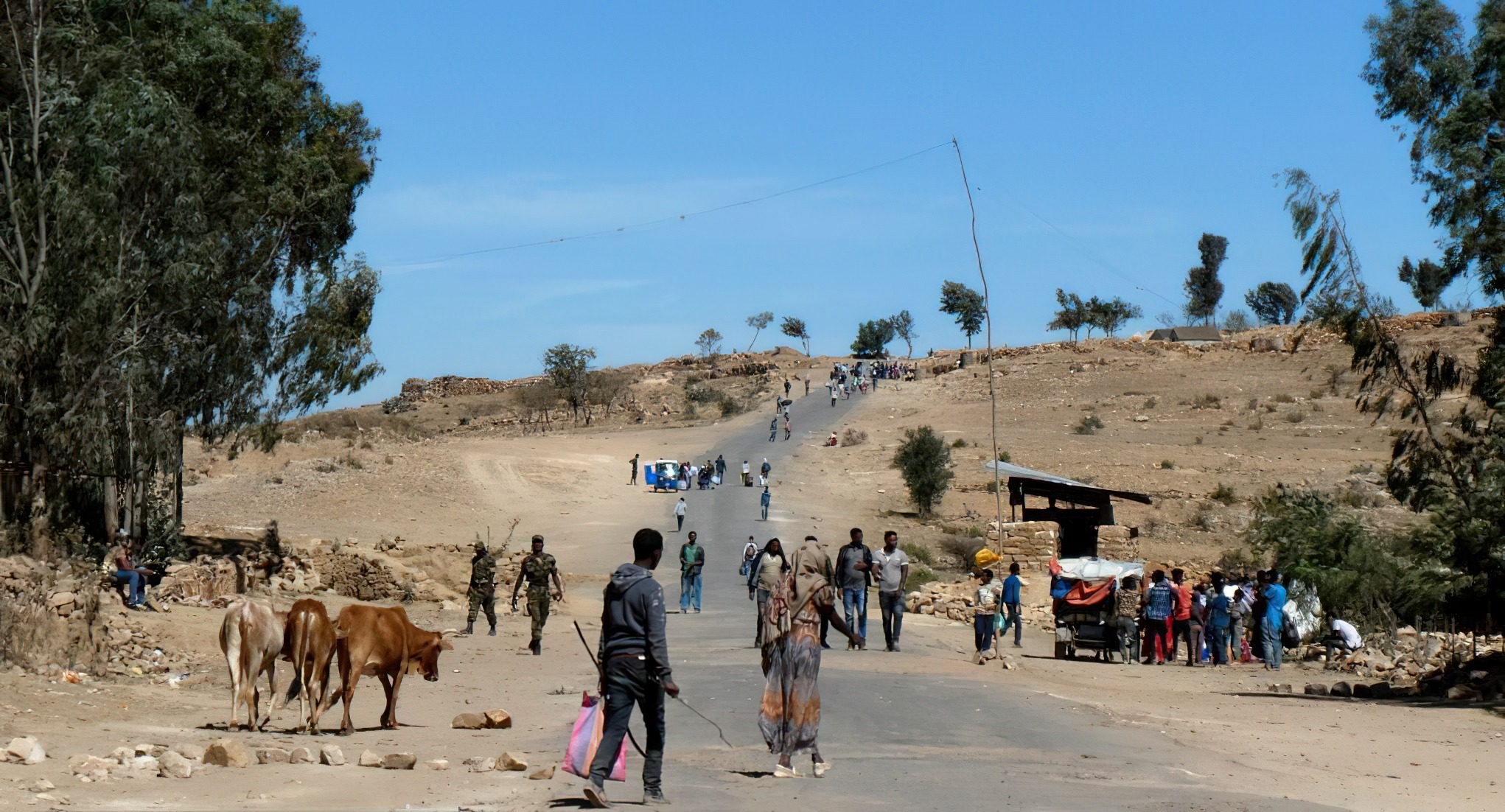
5. Irob
Irob is a district (woreda) located east of Zalambessa. Most of Irob has been awarded to Eritrea by the UN boundary commission in 2002, but remains under Ethiopian administration and military control. The area is populated by the Saho ethnic group, which consists of several tribes. Most of these tribes live in Eritrea, they are Muslims. Just one tribe, the Irob, are Orthodox Christians. As they have been under Ethiopian control for so long and the UN border would cut their homeland into two, most Irob oppose the handover of the contested area to the Eritrean side. Even though their concerns seem reasonable, so far both Ethiopia and Eritrea have avoided any meaningful discussion about the future of the area.
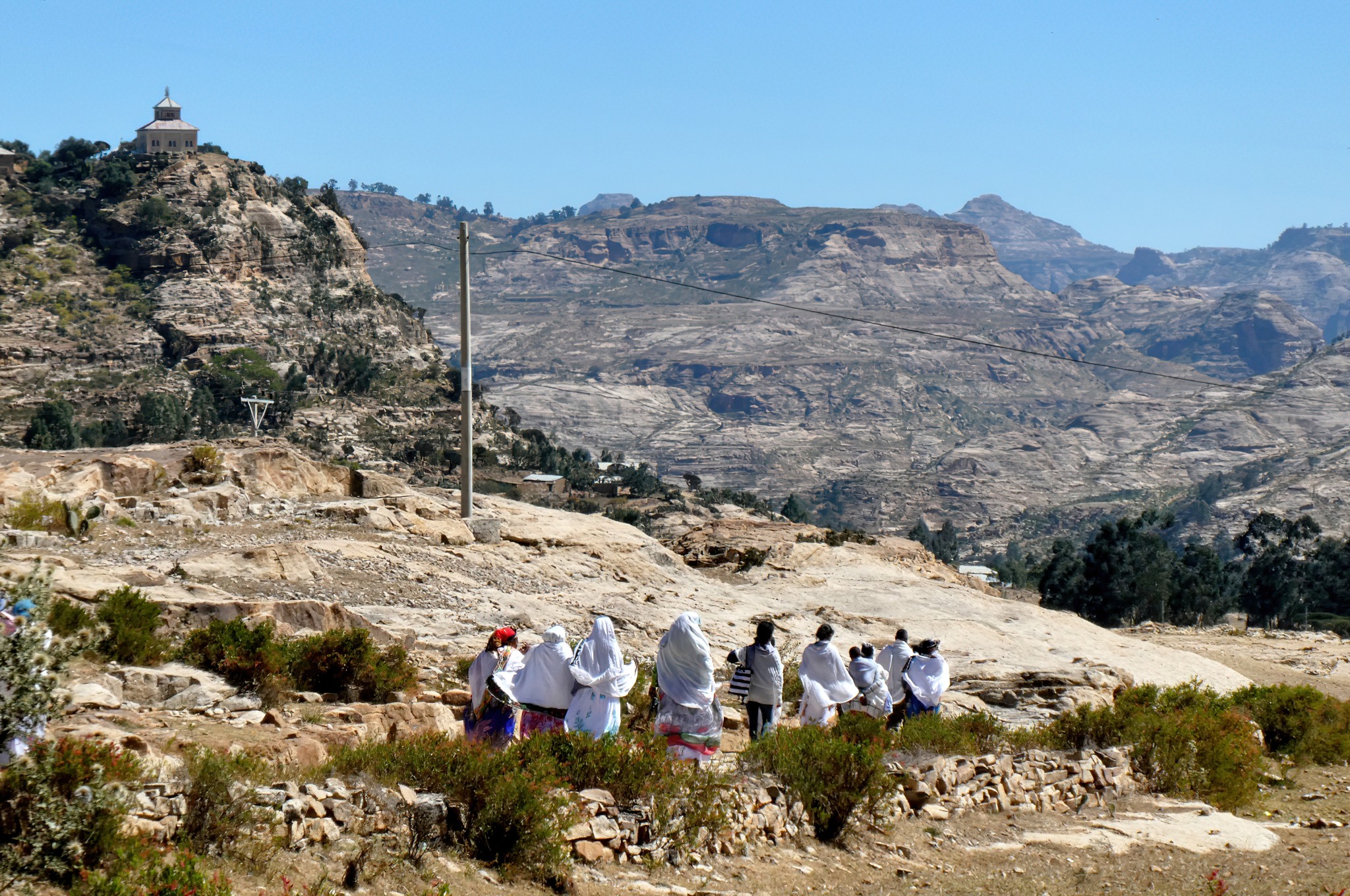 View from the main Zalambessa-Adigrat road towards the Irob area.
View from the main Zalambessa-Adigrat road towards the Irob area.- Lideta Sub City Woreda celebrated International Women’s Day - 11th March 2024
- THE AMHARA FANO FREEDOM FIGHTERS - 13th February 2024
- GREAT VICTORY FROM SHOWA GOVERNORATE - 12th February 2024

